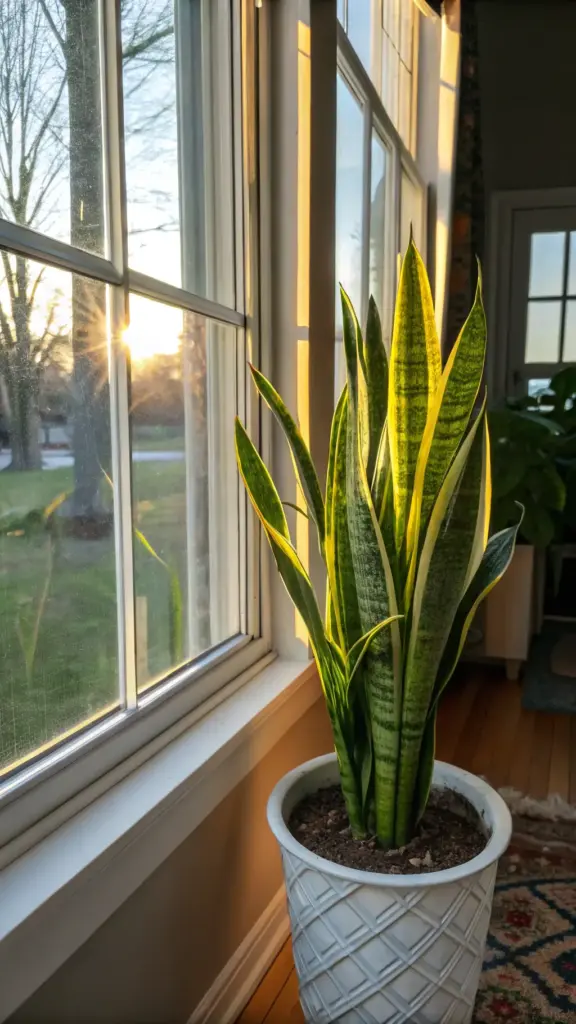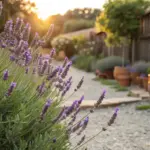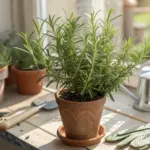3. Master the Perfect Light Balance

I spent two years wondering why my snake plant looked like it was slowly giving up on life. The leaves were pale, growth was practically nonexistent, and I was doing everything else right – or so I thought.
Turns out, I had it sitting in what I lovingly called my “plant corner,” which was basically a black hole for sunlight.
The Great Light Experiment That Opened My Eyes
After moving my sad snake plant from that dark corner to a spot near my east-facing window, the transformation was absolutely incredible. Within three weeks, I had new growth shooting up like little green rockets.
That’s when I realized I’d been starving my plants of the one thing they needed most: proper lighting conditions.
Decoding Your Home’s Light Like a Pro
I started mapping out my apartment’s natural light room by room, and honestly, it was eye-opening. Most of us have no clue how much light our spaces actually get.
North-facing windows give gentle, indirect light all day – perfect for snake plants that don’t want to get sunburned. East-facing windows provide that gorgeous morning sun without the harsh afternoon heat.
South-facing windows can be tricky because they get intense light that can actually scorch your snake plant’s leaves. West-facing windows are similar – lots of hot afternoon sun that might be too much.
Finding That Sweet Spot for Optimal Growth
Snake plants are like that friend who’s low-maintenance but still has preferences. They want bright, indirect light – think of it as sitting near a sunny window but not directly in the sun’s path.
I place mine about 3-6 feet from my brightest windows. Close enough to get good light, far enough to avoid leaf burn.
The ideal lighting for these plants is what I call “bright enough to read a book comfortably.” If you need to squint or turn on a lamp to read, your plant probably needs more light too.
When Your Plant is Getting Too Much Sun
Direct sunlight can literally bleach your snake plant’s beautiful patterns. I learned this the hard way when I put one on my south-facing windowsill during summer.
Signs of too much light exposure:
- Leaves turning yellow or white
- Brown, crispy edges that look burned
- Fading of the natural dark green and light green patterns
- Leaves that feel hot to the touch during the day
I had to move that poor plant immediately and trim off the damaged leaves. It took months to recover its gorgeous coloring.
Recognizing the Signs of Light Starvation
Low light conditions create a completely different set of problems. Your snake plant basically goes into survival mode and stops trying to grow.
Insufficient lighting symptoms include:
- Extremely slow or no new growth
- Leaves becoming thin and weak
- Loss of the distinctive striped patterns
- Leaning dramatically toward the nearest light source
I had one plant that literally started falling over because it was stretching so hard to reach a distant window. Poor thing looked like it was doing yoga.
Stylish Grow Light Solutions That Don’t Scream “Grow Light”
When I realized my apartment just didn’t have enough natural lighting in winter, I started exploring LED grow lights. The old-school purple ones made my living room look like a nightclub.
Full-spectrum LED bulbs that fit in regular lamps are game-changers. I use them in stylish floor lamps and desk lamps – nobody even knows they’re grow lights.
My favorite setup is a sleek arc floor lamp with a full-spectrum bulb positioned about 2 feet above my snake plants. It looks like regular home decor but gives my plants exactly what they need.
Seasonal Light Adjustments That Make All the Difference
Winter was where I really messed up initially. I kept my plants in the same spots year-round and wondered why they looked miserable from November through March.
Seasonal plant placement became part of my routine. In summer, I move plants slightly further from windows to avoid that intense afternoon sun. In winter, they get moved closer to maximize whatever daylight we get.
I also learned that artificial lighting becomes crucial during those short winter days. Running my grow lights for 12-14 hours during winter months keeps my plants happy when natural light drops to practically nothing.
Ready to dive into the foundation of healthy snake plants? Click next to discover why your soil choice might be the secret culprit behind all your plant struggles – and the simple DIY soil mix that costs under $15 but works better than expensive specialty blends!









GIPHY App Key not set. Please check settings